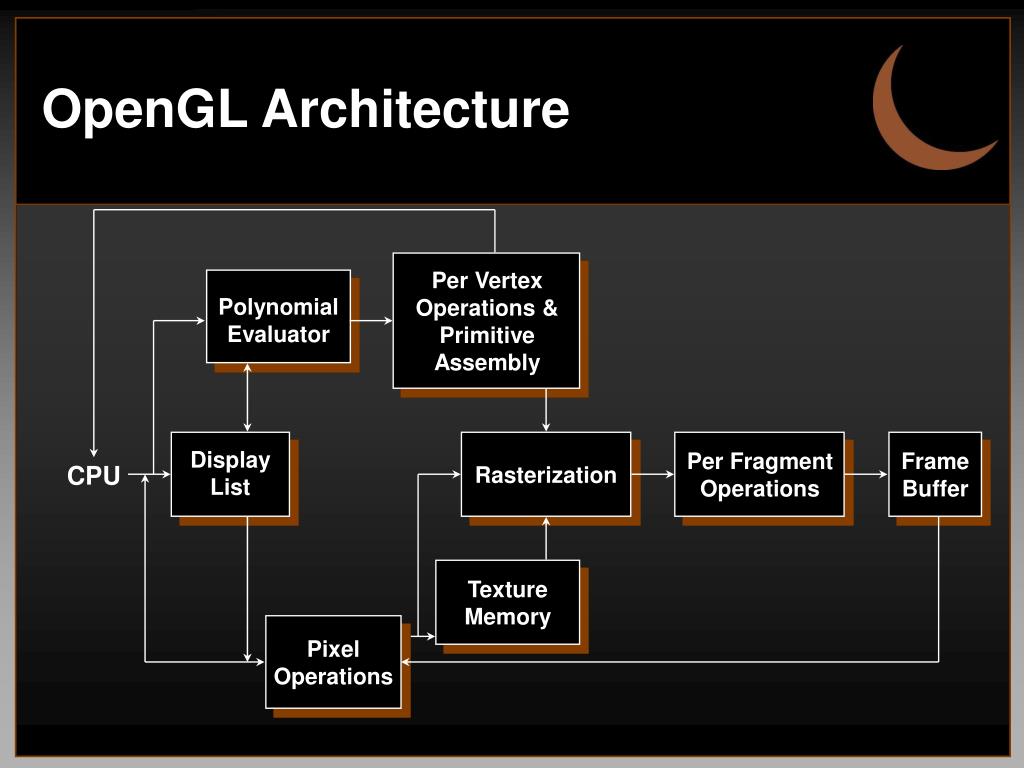

In GLSL, you apply modifiers (qualifiers) to a global shader variable declaration to give that variable a specific behavior in your shaders.

For example, with Direct3D and HLSL, the input to the vertex shader must match the data format in the vertex buffer, and the structure of a constant buffer in the app code must match the structure of a constant buffer ( cbuffer) in shader code. In HLSL, you pass Direct3D state explicitly from the app code to the shader. For example, with GLSL, you use the gl_Position variable to specify vertex position and the gl_FragColor variable to specify fragment color. In GLSL, you present much of the OpenGL state as pre-defined global variables. In GLSL, like Direct3D 9, the texture binding is part of the sampler state. Note HLSL has textures and samplers as two separate objects. The HLSL compiler compiles the shader to an intermediate binary representation before Direct3D passes it to the driver. Shader compilation integrated into the graphics API GLSL and HLSL generally differ in these ways: GLSL Microsoft adds optional features to the API in a generic way so they aren't specific to any particular hardware vendor Hardware vendors differentiate via extensions Higher-level modules, like Direct2D, are built upon lower modules to simplify development for Windows apps Provides higher-level modules via third-party libraries (for example, Simple DirectMedia Layer (SDL)) Microsoft implementation of hardware abstraction and certification on Windows platformsĪbstracted for hardware diversity, runtime manages most resourcesĭirect access to hardware layout app can manage resources and processing Hardware and operating system agnostic specification with vendor provided implementations Direct3D 11 and OpenGL ES 2.0 generally differ in these ways: OpenGL ES 2.0 But Direct3D 11 is a rendering implementation and API, not a specification OpenGL ES 2.0 is a rendering specification and API, not an implementation. They both have similar rendering pipelines and graphics features. OpenGL ES 2.0 and Direct3D 11 have many similarities.

Examples of porting OpenGL rendering code to Direct3D.Constant buffers and data transfers in HLSL.Uniform, attribute, and varying in GLSL.Examples of porting GLSL variables to HLSL.Porting GLSL pre-defined global variables to HLSL.Comparing OpenGL ES 2.0 with Direct3D 11.For info about the differences between Direct3D 11 and previous versions of Direct3D, see Feature mapping. The GLSL that is referred to herein is compatible with OpenGL ES 2.0 the HLSL is compatible with Direct3D 11. You port your OpenGL Shader Language (GLSL) code to Microsoft High Level Shader Language (HLSL) code when you port your graphics architecture from OpenGL ES 2.0 to Direct3D 11 to create a game for Universal Windows Platform (UWP).


 0 kommentar(er)
0 kommentar(er)
